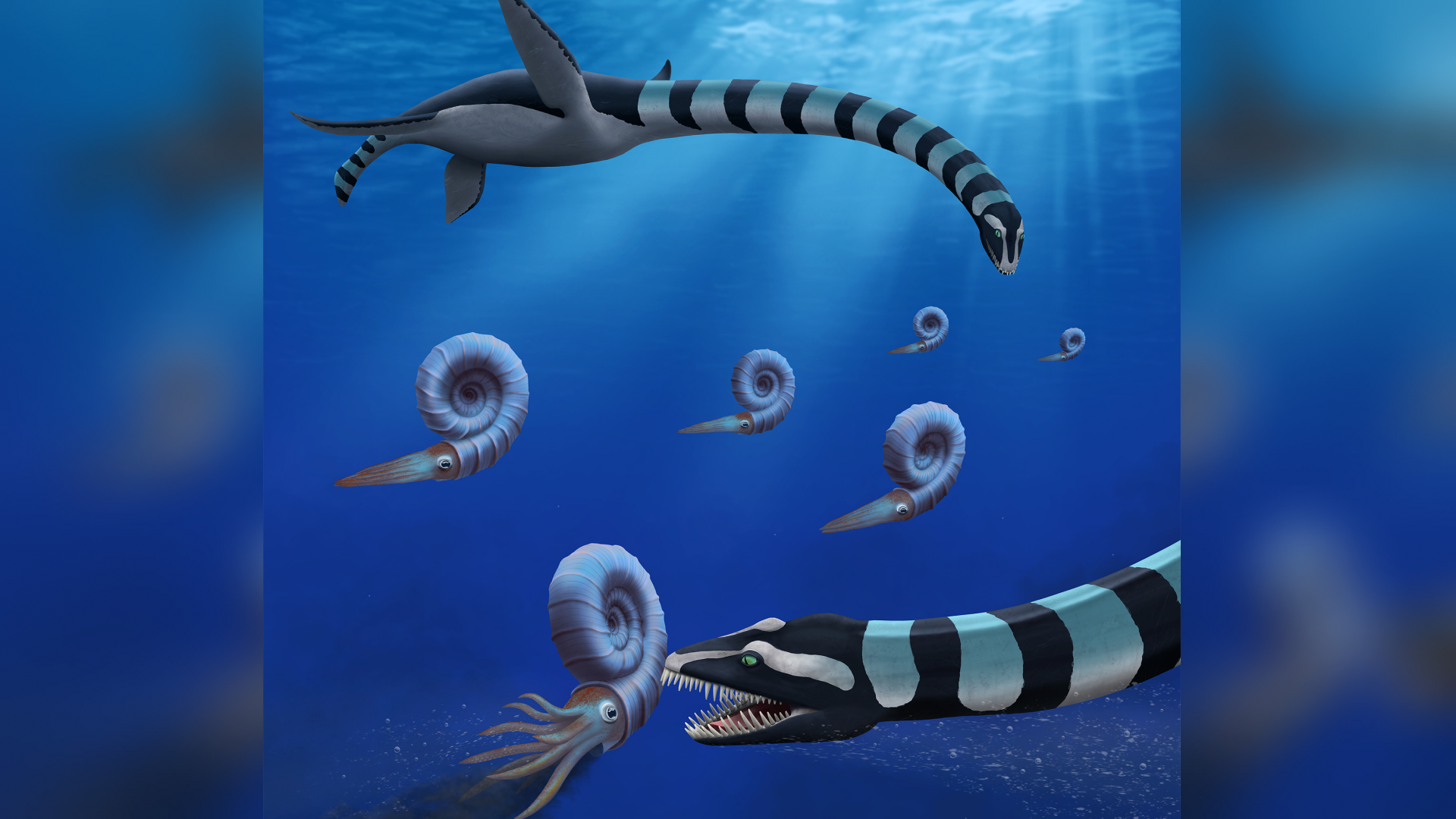
Scientists have finally solved the mystery behind the identity of a prehistoric sea monster.
The marine reptile, which could grow to around 39 feet (12 meters) long and had heavy teeth for crushing prey, was previously known from several sets of fossils unearthed over the past two decades.
One key fossil was a complete but badly-preserved adult skeleton from about 85 million years ago, discovered in 1988 on Vancouver Island in British Columbia, Canada. It was thought to come from a group of long-necked reptiles known as plesiosaurs. However, until now, scientists weren't sure if it belonged to a new species or a previously discovered one.
"The identity of the animal that left the fossils has remained a mystery," F. Robin O'Keefe, a professor of anatomy at Marshall University in West Virginia, said in a statement. "Our new research published today finally solves this mystery."
In a new study published May 22 in the Journal of Systematic Palaeontology, O'Keefe and colleagues formally classified all the fossils as Traskasaura sandrae. This species is so different from other marine reptiles that researchers assigned it to a brand new genus, Traskasaura, within a subgroup of plesiosaurs called elasmosaurs.
Elasmosaurs, like other plesiosaurs, lived throughout the Cretaceous period (145 to 66 million years ago) alongside the dinosaurs and shared the oceans with other marine reptiles, including ichthyosaurs and mosasaurs. Plesiosaurs were characterized by having small heads on long necks, broad bodies and four large, paddle-like limbs. The mythical Loch Ness Monster is usually depicted as a plesiosaur. They are thought to have breathed air and probably had to surface regularly, akin to modern-day marine mammals.
The first T. sandrae specimen was unearthed in 1988 in the Haslam Formation on Vancouver Island, was formally described by scientists in 2002 and dates back to between 86 and 83 million years ago. Other fossils found in the same region include a right humerus and an "excellently preserved" juvenile skeleton.
Related: Half-a-billion-year-old 3-eyed sea creature dubbed 'Mosura' breathed through big gills on its butt
Although the adult specimen discovered in 1988 wasn't quite different enough from other elasmosaurs, it wasn't similar enough to any known species either.
"Relatively few characters are unambiguous on this skeleton," the researchers wrote in their paper.

Newer fossils also had strange traits, but they weren't complete enough to confirm the possibility of a new species. The newest juvenile skeleton specimen, however, helped shed light on these ancient creatures' features, revealing that three had the same key traits.
"It has a very odd mix of primitive and derived traits — the shoulder, in particular, is unlike any other plesiosaur I have ever seen," said O'Keefe.
After analyzing the features of all three fossil specimens, the researchers concluded that they must all belong to a new genus of elasmosaur.
T. sandrae is thought to have at least 50 vertebrae in its neck. This adaptation may have made the aquatic predator extremely good at downward swimming and suggests that it hunted prey by diving from above.
What about their diet? The ammonite molluscs that were plentiful in the oceans during the Cretaceous period are a "good candidate — due to Traskasaura's robust teeth, ideal, possibly, for crushing ammonite shells," O'Keefe said.
"When I first saw the fossils and realized they represented a new taxon, I thought it might be related to other plesiosaurs from the Antarctic," said O'Keefe. "My Chilean colleague Rodrigo Otero thought differently, and he was right; Traskasaura is a strange, convergently evolved, fascinating beast."







